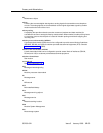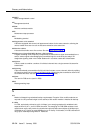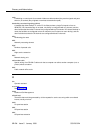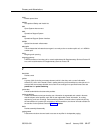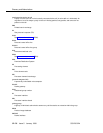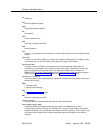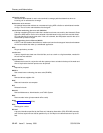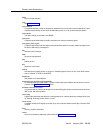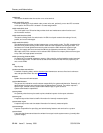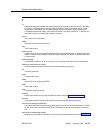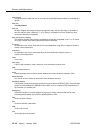
Glossary and Abbreviations
Issue 5 January 1998 GL-41555-230-024
public network
The network that can be openly accessed by all customers for local and long-distance calling.
pulse-code modulation (PCM)
An extension of pulse-amplitude modulation (PAM) in which carrier-signal pulses modulated by an
analog signal, such as speech, are quantized and encoded to a digital, usually binary, format.
Q
QPPCN
Quality Protection Plan Change Notice
OSIG
QSIG is a set of open standards for Enterprise networking. It is a protocol defining message
exchanges. It includes a basic call setup procedure as well as a list of supplementary services.
quadrant
A group of six contiguous DS0s in fixed locations on an ISDN-PRI facility. Note that this term
comes from T1 terminology (one-fourth of a T1), but there are five quadrants on an E1 ISDN-PRI
facility (30B + D).
queue
An ordered sequence of calls waiting to be processed.
queuing
The process of holding calls in order of their arrival to await connection to an attendant, to an
answering group, or to an idle trunk. Calls are automatically connected in first-in, first-out
sequence.
R
RAM
See random-access memory (RAM).
random-access memory (RAM)
A storage arrangement whereby information can be retrieved at a speed independent of the
location of the stored information.
RBS
Robbed-bit signaling
RC
Radio controller
RCL
Restricted call list
read-only memory (ROM)
A storage arrangement primarily for information-retrieval applications.
recall dial tone
Tones signalling that the system has completed a function (such as holding a call) and is ready to
accept dialing.



